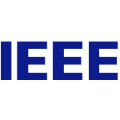Polarization is an unprecedented coding technique in that it not only achieves channel capacity, but also does so at a faster speed of convergence than any other technique. This speed is measured by the "scaling exponent" and its importance is three-fold. Firstly, estimating the scaling exponent is challenging and demands a deeper understanding of the dynamics of communication channels. Secondly, scaling exponents serve as a benchmark for different variants of polar codes that helps us select the proper variant for real-life applications. Thirdly, the need to optimize for the scaling exponent sheds light on how to reinforce the design of polar code. In this paper, we generalize the binary erasure channel (BEC), the simplest communication channel and the protagonist of many polar code studies, to the "tetrahedral erasure channel" (TEC). We then invoke Mori--Tanaka's $2 \times 2$ matrix over GF$(4)$ to construct polar codes over TEC. Our main contribution is showing that the dynamic of TECs converges to an almost--one-parameter family of channels, which then leads to an upper bound of $3.328$ on the scaling exponent. This is the first non-binary matrix whose scaling exponent is upper-bounded. It also polarizes BEC faster than all known binary matrices up to $23 \times 23$ in size. Our result indicates that expanding the alphabet is a more effective and practical alternative to enlarging the matrix in order to achieve faster polarization.
翻译:极地化是一种史无前例的编码技术, 因为它不仅能达到频道能力, 而且还能以比任何其他技术更快的速度完成。 这一速度由“ 缩放指数” 和它的三重重要性来测量。 首先, 估计缩放指数具有挑战性, 要求更深入地理解通信渠道的动态。 其次, 缩放指数可以作为不同极地代码变量的基准, 帮助我们选择真实应用的极地代码的适当变量。 第三, 优化缩放指数需要为如何加强极地代码的设计提供更快的汇合速度。 在本文中, 我们将二进制淡化频道( BEC ) 、 最简单的沟通渠道和许多极地代码研究的主角普遍化为三倍。 然后我们引用Mori- Tanaka 的2美元矩阵, 超过 GFP 4 美元, 用于构建极地代码的正确应用。 我们的主要贡献是显示, TEC 的动态将接近于一个几乎一元的平方平方平面的平面值。 然后, 我们的平面的直径直径直径直径直径直径直径直径直径直径直径直径直径直径直径直至23的基基底基底基底基底基底基底基底基底基底基底基底基底。 。
相关内容
- Today (iOS and OS X): widgets for the Today view of Notification Center
- Share (iOS and OS X): post content to web services or share content with others
- Actions (iOS and OS X): app extensions to view or manipulate inside another app
- Photo Editing (iOS): edit a photo or video in Apple's Photos app with extensions from a third-party apps
- Finder Sync (OS X): remote file storage in the Finder with support for Finder content annotation
- Storage Provider (iOS): an interface between files inside an app and other apps on a user's device
- Custom Keyboard (iOS): system-wide alternative keyboards
Source: iOS 8 Extensions: Apple’s Plan for a Powerful App Ecosystem





